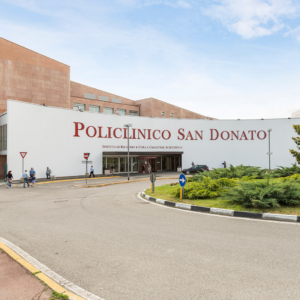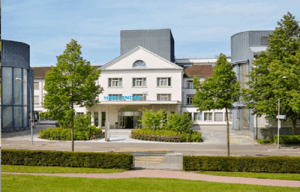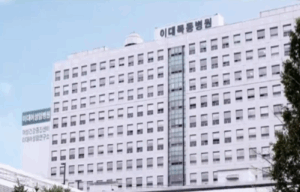Laryngeal cancer
Description of the disease
Laryngeal cancer is a malignant tumor that develops in the larynx, an organ located in the throat responsible for voice production, breathing, and protecting the airway from food aspiration. This condition disrupts vital bodily functions such as the ability to speak, breathe, and swallow.
Laryngeal cancer occurs more frequently in men over the age of 50, particularly in those who smoke and abuse alcohol. Other high-risk groups include individuals working in dusty environments (such as the textile industry) and those exposed to carcinogens such as petroleum, petroleum derivatives, benzene, phenolic resins, and asbestos. Chronic inflammatory processes in the oropharynx also increase the risk of malignant transformation.
Laryngeal cancer may develop in any of the three anatomical regions of the larynx:
- Supraglottic region (above the vocal cords): Tumors in this area can cause voice changes and difficulty swallowing.
- Glottic region (the vocal cords themselves): Tumors here are often accompanied by hoarseness or loss of voice, especially in early stages.
- Subglottic region (below the vocal cords, near the trachea): Less commonly affected, but tumors in this area may cause breathing difficulties.
Each of these regions plays a huge role in sound production, airway protection, and normal respiration, so a tumor in any of them can severely impact a person’s quality of life.
Symptoms that indicate the need for diagnosis and treatment
The symptoms of laryngeal cancer vary depending on the tumor’s location and stage, but the most common signs include:
- Hoarseness or other voice changes: one of the earliest and most frequent symptoms
- Sore throat or difficulty swallowing
- A sensation of a foreign object in the throat
- Persistent cough, possibly accompanied by blood-streaked sputum
- Enlarged lymph nodes
- Weight loss and fatigue, particularly in rapidly progressing disease
Diagnosis and treatment of laryngeal cancer
Diagnosis
Leading international clinics utilize the following procedures to diagnose laryngeal cancer:
- Laryngoscopy: The first step in diagnosis, allowing the doctor to visually examine the larynx using a laryngoscope. This can be indirect (via a mirror) or direct (using a flexible endoscope).
- Biopsy: If suspicious lesions are found during laryngoscopy, a tissue sample is collected for histopathological examination to confirm the presence of malignant cells.
- Computed tomography (CT) and magnetic resonance imaging (MRI): These imaging techniques help determine tumor size, location, and metastasis to surrounding tissues and lymph nodes.
- PET-CT (Positron emission tomography): Assesses the metabolic activity of the tumor and detects even the smallest metastases.
- Ultrasound of the neck: Evaluates lymph node condition and helps detect regional metastases.
Treatment
Treatment of laryngeal cancer depends on the stage of the disease, tumor location, and the patient’s overall health. According to the latest European and American clinical protocols, treatment may include:
Surgical intervention:
- Laryngectomy: Partial or total removal of the larynx. Total laryngectomy is performed when the tumor affects a large portion of the larynx or spreads to adjacent tissues.
- Organ-preserving surgery: In cases of smaller tumors, partial resection can be performed, allowing preservation of vocal function.
- Robotic-assisted surgery: Systems such as the Da Vinci robotic surgical system enable high-precision surgery with minimal damage to surrounding healthy tissues.
Radiation therapy:
Used as a standalone treatment in early stages, or in combination with surgery and/or chemotherapy in more advanced stages. Advanced techniques such as IMRT (Intensity-Modulated Radiation Therapy) allow radiation to be precisely directed at the tumor, minimizing exposure to healthy tissue.
Chemotherapy:
Used in advanced or metastatic cases, often in combination with radiotherapy. Modern chemotherapeutic agents help reduce side effects and increase treatment efficacy.
Targeted therapy:
A modern treatment modality that targets specific molecules or genes essential to cancer cell growth and survival. Unlike conventional chemotherapy, which affects all rapidly dividing cells, targeted therapy is more selective, thus minimizing collateral damage to healthy cells and reducing side effects.
Immunotherapy:
An advanced approach that activates the patient’s immune system to identify and destroy cancer cells. Agents such as immune checkpoint inhibitors (e.g., nivolumab) have shown promising results in treating advanced-stage laryngeal cancer.
Innovations in global cancer clinics
Modern technologies not only enable effective treatment of laryngeal cancer but also help restore lost functions post-surgery. For instance, in cases where the larynx has been completely removed, patients may undergo vocal cord prosthesis implantation or receive an artificial larynx. These procedures allow patients to regain the ability to speak, significantly improving their quality of life.
Top clinics
-
 Baden-Baden, Germany Max Grundig Clinic
Baden-Baden, Germany Max Grundig Clinic -
 Seoul, South Korea Asan Medical Center
Seoul, South Korea Asan Medical Center -
 Jerusalem, Israel Hadassah Medical Center
Jerusalem, Israel Hadassah Medical Center -
 Petah Tikva, Israel Medical Center “Rabin”
Petah Tikva, Israel Medical Center “Rabin” -
 Istanbul, Turkey Medipol Mega University Hospital
Istanbul, Turkey Medipol Mega University Hospital -
 Istanbul, Turkey Istanbul Florence Nightingale Hospital
Istanbul, Turkey Istanbul Florence Nightingale Hospital -
 Geneva, Switzerland Hirslanden Clinique La Colline
Geneva, Switzerland Hirslanden Clinique La Colline -
 Geneva, Switzerland Generale-Beaulieu
Geneva, Switzerland Generale-Beaulieu -
 Istanbul, Turkey Acibadem Altunizade
Istanbul, Turkey Acibadem Altunizade -
 Istanbul, Turkey Medistate International Hospital
Istanbul, Turkey Medistate International Hospital -
 Istanbul, Turkey Acıbadem Ataşehir Clinic
Istanbul, Turkey Acıbadem Ataşehir Clinic -
 Antalya, Turkey Hospital Medical Park Antalya
Antalya, Turkey Hospital Medical Park Antalya -
 Dubai, UAE NMC Healthcare
Dubai, UAE NMC Healthcare -
 Istanbul, Turkey Hospital “Memorial Şişli”
Istanbul, Turkey Hospital “Memorial Şişli” -
 Milan, Italy San Donato Hospital in Milan, Italy
Milan, Italy San Donato Hospital in Milan, Italy -
 Milan, Italy San Raffaele University Hospital
Milan, Italy San Raffaele University Hospital -
 Abu Dhabi, UAE Burjeel Hospital Abu Dhabi
Abu Dhabi, UAE Burjeel Hospital Abu Dhabi -
 Vienna, Austria Debling Private Clinic
Vienna, Austria Debling Private Clinic -
 Vienna, Austria Confraternität Private Hospital
Vienna, Austria Confraternität Private Hospital -
 Heidelberg, Germany Heidelberg University Hospital
Heidelberg, Germany Heidelberg University Hospital -
 Hamburg, Germany Asklepios Nord Heidberg
Hamburg, Germany Asklepios Nord Heidberg -
 Dusseldorf, Germany FKKD Clinical Complex
Dusseldorf, Germany FKKD Clinical Complex -
 Istanbul, Turkey “Memorial Bahçelievler” Clinic
Istanbul, Turkey “Memorial Bahçelievler” Clinic -
 Incheon, South Korea Gil Medical Center at Gachon University
Incheon, South Korea Gil Medical Center at Gachon University -
 Lausanne, Switzerland Clinique Montchoisy
Lausanne, Switzerland Clinique Montchoisy -
 Nyon, Switzerland Clinique Genolier
Nyon, Switzerland Clinique Genolier -
 Istanbul, Turkey “Memorial Ataşehir” Clinic
Istanbul, Turkey “Memorial Ataşehir” Clinic -
 Barcelona, Spain QuironSalud Barcelona Hospital
Barcelona, Spain QuironSalud Barcelona Hospital -
 Barcelona, Spain Medical Center "Teknon"
Barcelona, Spain Medical Center "Teknon" -
 Barcelona, Spain University Hospital Barnaclinic+
Barcelona, Spain University Hospital Barnaclinic+ -
 Madrid, Spain University Hospital HM Monteprincipe
Madrid, Spain University Hospital HM Monteprincipe -
 Gebze, Turkey Anadolu Clinic
Gebze, Turkey Anadolu Clinic -
 Zurich, Switzerland Hirslanden Clinic
Zurich, Switzerland Hirslanden Clinic -
 Madrid, Spain Quiron Salud University Hospital
Madrid, Spain Quiron Salud University Hospital -
 Lugano, Switzerland Saint Anna Clinic
Lugano, Switzerland Saint Anna Clinic -
 Geneva, Switzerland Clinique des Grangettes
Geneva, Switzerland Clinique des Grangettes -
 Duesseldorf, Germany Oncological Center Dusseldorf
Duesseldorf, Germany Oncological Center Dusseldorf -
 Seoul, South Korea Samsung Medical Center
Seoul, South Korea Samsung Medical Center -
 Seoul, South Korea Medical Center at Ewha Womans University
Seoul, South Korea Medical Center at Ewha Womans University -
 SNUH
SNUH








































